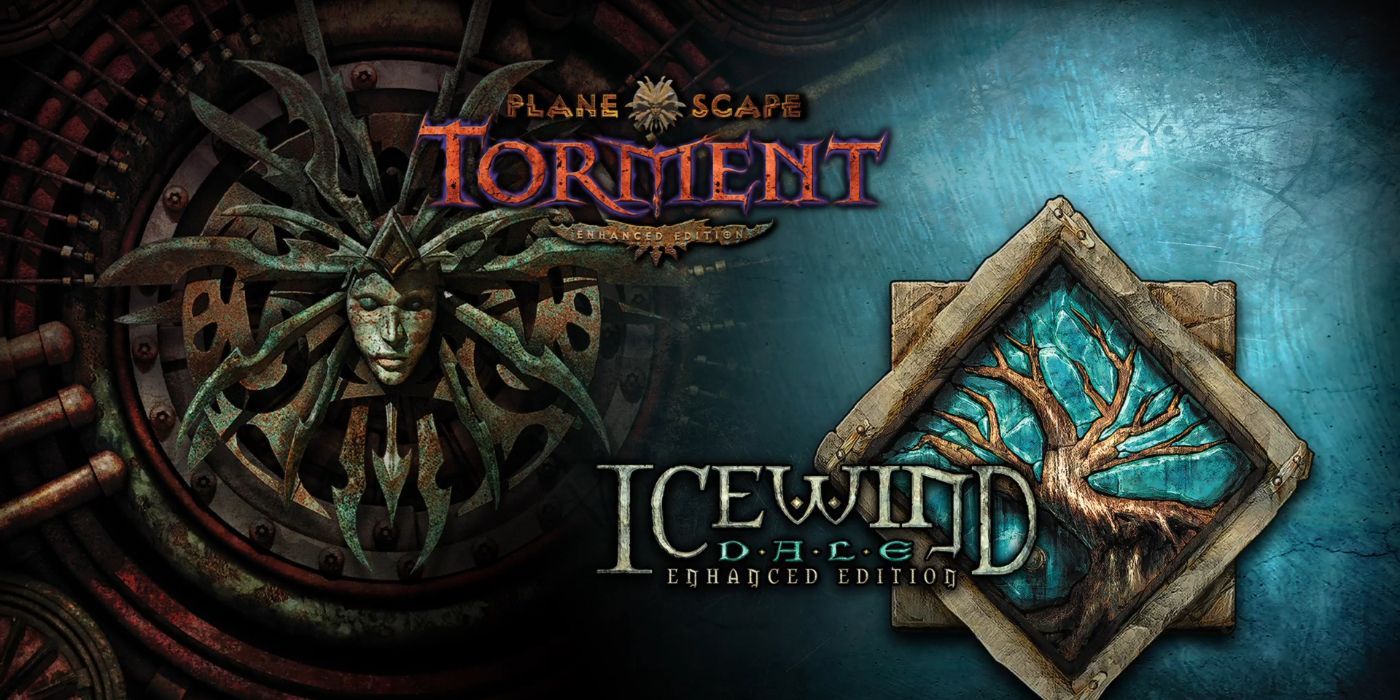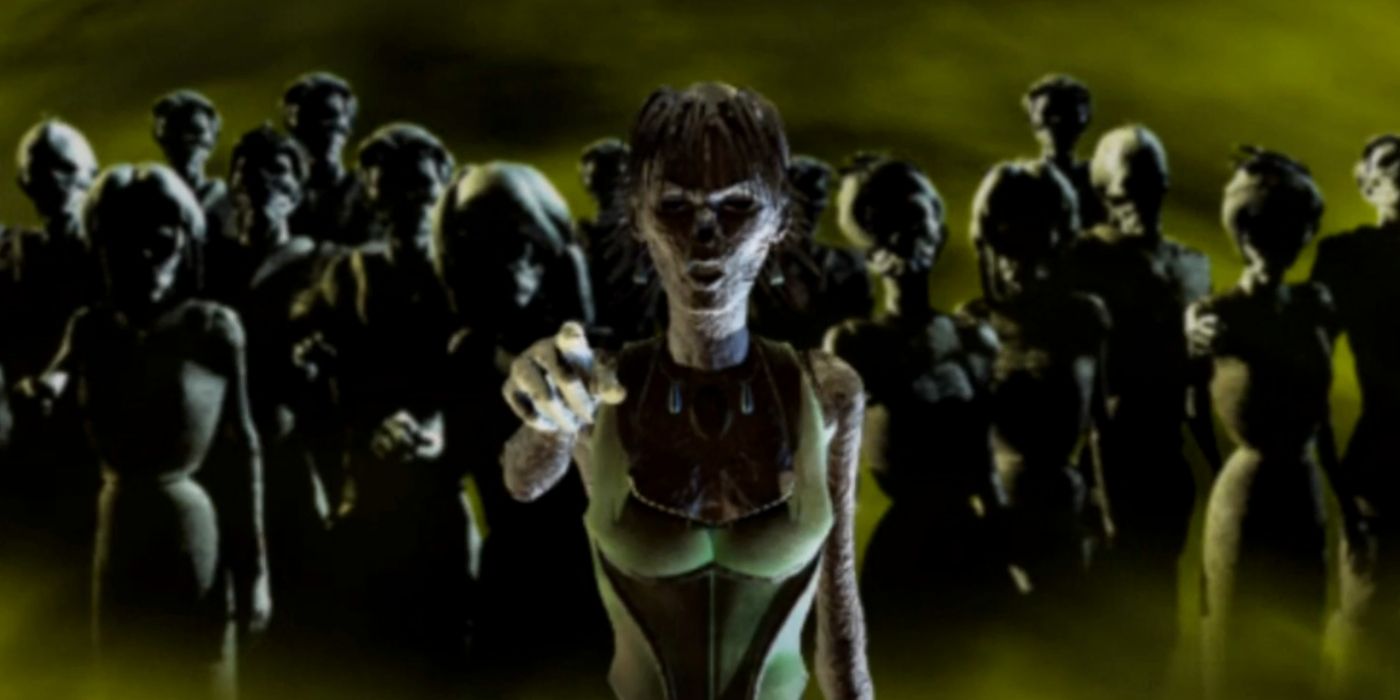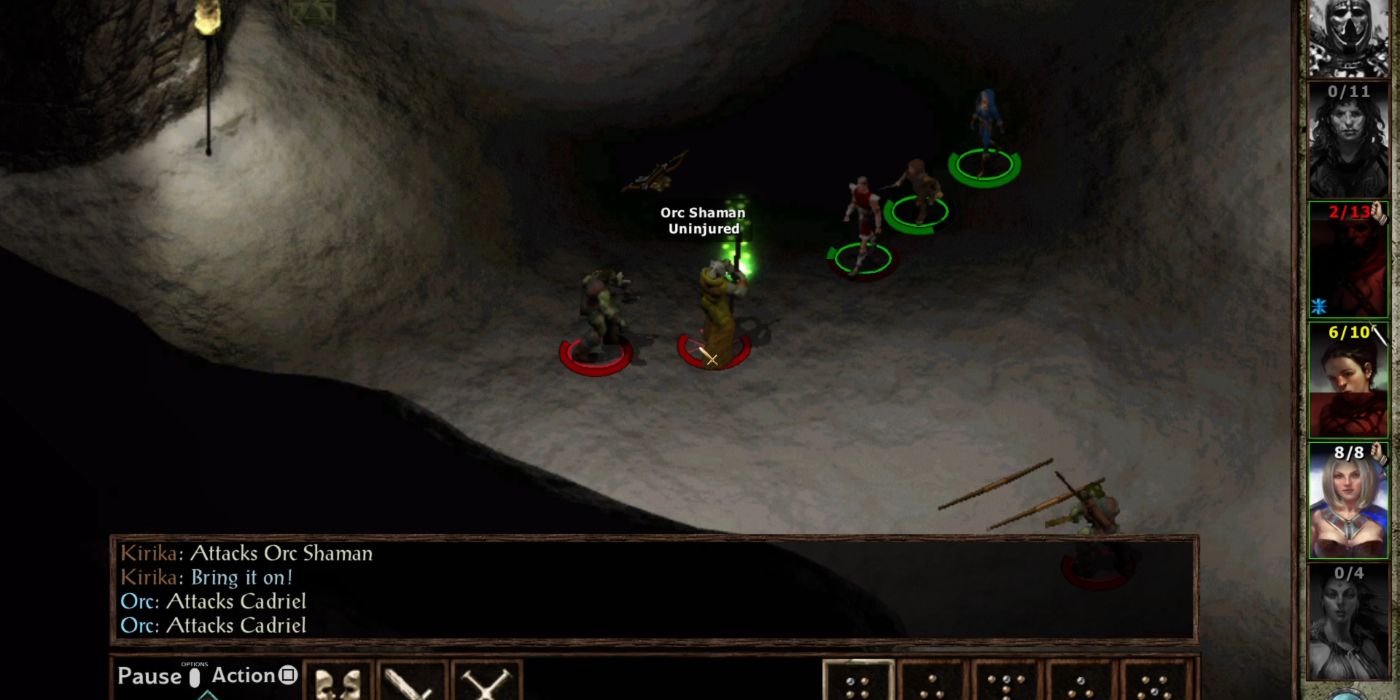Planescape: Torment and Icewind Dale are the weirdest entries from Black Isle's D&D phase, but that doesn't mean they aren't worth playing.
There are some strange creatures and ideas in the more obscure Dungeons & Dragons pantheon, and the Planescape Torment & Icewind Dale Enhanced Editions recently released on the Nintendo Switch, PlayStation 4, and Xbox One contain a majority of this obscure weirdness. Although both games were originally created in BioWare's Infinity Engine, the same one used to power the Baldur's Gate franchise, both Icewind Dale and Planescape: Torment play very differently from each other, with regards not only to dialog and gameplay mechanics but also combat and general ambiance.
Icewind Dale is a more traditional Dungeons & Dragons experience, one which sees a party of adventurers setting out in the frozen North in order to... well, adventure, eventually. Unlike both Baldur's Gate games and Planescape: Torment, in the very first menu screens of Icewind Dale players are urged to customize their entire party of up to six characters from scratch, with the actual gameplay (which stars in a tavern, naturally) only beginning after these six characters have already met and joined up together offscreen. While this may accurately represent the way nearly every real life tabletop game of Dungeons & Dragons starts, it does very little to set the actual plot of the game in motion.
Planescape: Torment, on the other hand, starts off with an early-3D pre-rendered video cutscene depicting the main character's body being dragged onto a stone slate and slowly reviving from the dead. Players take on the role of The Nameless One, a heavily scarred and tattooed walking corpse, and within seconds of reanimation are greeted by Morte, a floating skull with a pretty sharp sense of humor, and tasked with figuring out, among other things, just how exactly they are still alive. The game is more lighthearted and less serious while also being much darker than previous titles, a balance which can see magic-wielding sewer rats taking up residence in a cult's underground hideout.
While Icewind Dale feels more like Baldur's Gate in its presentation and mechanics, certain changes have been made which completely alter the way the game is experienced. Firstly, attacks seem to hit far more often than they did in the previous title, keeping the action moving at a faster clip. Second, and most importantly, because of the party-centric nature of the game's story any one character can fall in combat and, unless every single member of the party dies, the game can continue.
Death is handled even more interestingly in Planescape: Torment, where the character's undying nature is not only plot-relevant but also functional, as each death sees the Nameless One simply waking up again in a nearby safe area. Without the fear of a game-ending mistake coming from every combat encounter or misunderstood dialog tree, players are free to experiment with different ideas and actions without having to resort to save scumming in order to keep making progress.
This is helped along by the writing in Planescape: Torment, which is both funnier and lengthier than in any of the previously mentioned titles. Combat encounters happen far less frequently as well, unless a player goes around specifically angering people on purpose, which perhaps explains why the inventory and equipment screens have been simplified.
Problems which were prevalent in the Baldur's Gate & Baldur's Gate II Enhanced Editions are still found in the titles here, especially when it comes to AI pathfinding. It remains frustrating to select between multiple nearby items and NPCs in the overworld, and the Advanced Dungeons & Dragons THAC0 system unfortunately remains the primary method for which damage is scored. A few crashes were also experienced when transitioning between areas, once in Icewind Dale and twice during Planescape: Torment.
Even with those issues, Icewind Dale & Planescape: Torment both contain enough additions and refinements to the Baldur's Gate AD&D formula to warrant a purchase from players who love old-school role-playing games. The music of Icewind Dale is beautiful and enchanting, contrasting perfectly with Planescape: Torment's blood and zombie squalor. These games are definitely not for everyone, but for players willing to put up with a sarcastic, hovering skull or a evil lair filled with lizard men containing the gem of a forgotten demon, it's hard to find a better, or weirder, experience in this genre.
Planescape: Torment & Icewind Dale Enhanced Editions is out now for PlayStation 4, Xbox One, PC, and the Nintendo Switch. A PS4 code was provided to Screen Rant for the purposes of this review.



